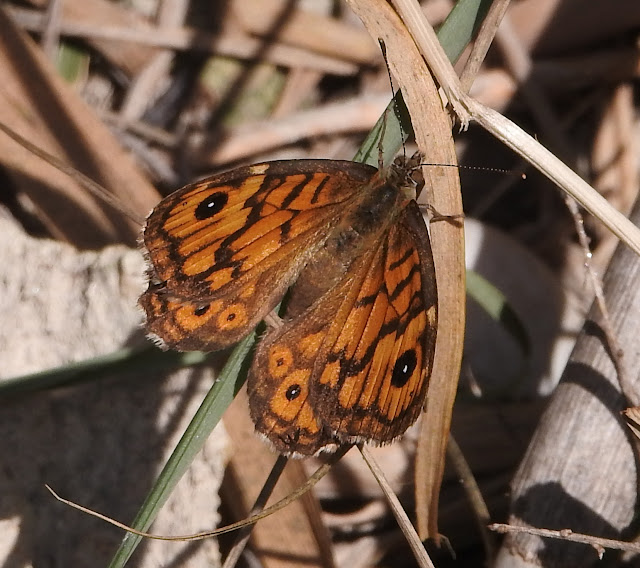This Blog contains Wildlife, Plants and Bird Photos from Walks, Safaris, Birding Trips and Vacations. Most of the pictures have been taken with my Nikon P900 and P950X cameras. Just click on any image for a larger picture. On the right column under the Blog Archive are the entries by date. Below that under Animal categories all the diffent species of Animals, Birds, Insects and Plants contained in the website are listed. Clicking on any entry will show all the entries for that species.
TOTAL PAGEVIEWS
TRANSLATE
Tuesday, 2 November 2021
Monday, 1 November 2021
Sunday, 31 October 2021
24-10-2021 ATTICA ZOO ATHENS, GREECE - SOUTHERN CASSOWARY (Casuarius casuarius)
The southern cassowary is a solitary bird, which pairs only in breeding season, in late winter or spring. The male builds a nest on the ground, a mattress of herbaceous plant material 5 to 10 centimetres (2–4 in) thick and up to 100 centimetres (39 in) wide. This is thick enough to let moisture drain away from the eggs. The male also incubates the eggs and raises the chicks alone. A clutch of three or four eggs are laid measuring 138 by 95 millimetres (5.4 in × 3.7 in). They have a granulated surface and are initially bright pea-green in colour although they fade with age. Southern cassowaries make a thunderous call during mating season, and hissing and rumblings otherwise. Chicks will make frequent high-pitched contact whistles and chirps to call the male.
Southern cassowaries have a reputation for being dangerous to humans and animals, and are often regarded as aggressive. The birds can jump quite high and kick powerfully with their blade-like claws. However, deadly encounters with southern cassowaries are rare. Only two human deaths have been reported since 1900. A 2003 historical study of 221 southern cassowary attacks showed that 150 had been against humans: 75% of these had been from southern cassowaries that had been fed by people, 71% of the time the bird had chased or charged the victim, 15% of the time they kicked. Of the attacks, 73% involved the birds expecting or snatching food, 5% involved defending their natural food sources, 15% involved defending themselves from attack, and 7% involved defending their chicks or eggs. Only one human death was reported among those 150 attacks.
The first documented human death caused by a southern cassowary was on 6 April 1926. In Australia, 16-year-old Phillip McClean and his brother, age 13, came across a southern cassowary on their property and decided to try and kill it by striking it with clubs. The bird kicked the younger boy, who fell and ran away as his older brother struck the bird. The older McClean then tripped and fell to the ground. While he was on the ground, the cassowary kicked him in the neck, opening a 1.25 cm (0.5 in) wound that may have severed his jugular vein. The boy died of his injuries shortly thereafter.
Another human death due to a southern cassowary was recorded in Florida on 12 April 2019. The bird's owner, a 75-year-old man who had raised the animal, was apparently clawed to death after he fell to the ground.
Being fed by people tempts southern cassowaries into closer associations with human-inhabited areas, increasing the already high risk of vehicle strikes – a major cause of southern cassowary mortality – and increasing the likelihood of encounters with humans. Many "aggressive" birds are simply responding to having been fed by humans in the past. Unfortunately the poor reputation of this species leads to confusion and misinformation among the public, which hampers conservation efforts of this shy bird.
24-10-2021 ATTICA ZOO ATHENS, GREECE - HAWAIIAN GOOSE (Branta sandvicensis)
The nene (Branta sandvicensis), also known as the nēnē or the Hawaiian goose, is a species of bird endemic to the Hawaiian Islands. The nene is exclusively found in the wild on the islands of Oahu, Maui, Kauaʻi, Molokai, and Hawaiʻi. In 1957, it was designated as the official state bird of the state of Hawaiʻi.
The Hawaiian name nēnē comes from its soft call. The specific name sandvicensis refers to the Sandwich Islands, a former name for the Hawaiian Islands.
The nene is a large-sized goose at 41 cm (16 in) tall. Although they spend most of their time on the ground, they are capable of flight, with some individuals flying daily between nesting and feeding areas. Females have a mass of 1.525–2.56 kg (3.36–5.64 lb), while males average 1.695–3.05 kg (3.74–6.72 lb), 11% larger than females. Adult males have a black head and hindneck, buff cheeks and heavily furrowed neck. The neck has black and white diagonal stripes. Aside from being smaller, the female Nene is similar to the male in colouration. The adult's bill, legs and feet are black. It has soft feathers under its chin. Goslings resemble adults, but are a duller brown and with less demarcation between the colors of the head and neck, and striping and barring effects are much reduced.
The nene is an inhabitant of shrubland, grassland, coastal dunes, and lava plains, and related anthropogenic habitats such as pasture and golf courses from sea level to as much as 2,400 m (7,900 ft). Some populations migrated between lowland breeding grounds and montane foraging areas.
The nene could at one time be found on the islands of Hawaiʻi, Maui, Kahoʻolawe, Lānaʻi, Molokaʻi, Oʻahu and Kauaʻi. Today, its range is restricted to Hawaiʻi, Maui, Molokaʻi, and Kauaʻi. A pair arrived at the James Campbell National Wildlife Refuge on Oʻahu in January 2014; two of their offspring survived and are seen regularly on the nearby golf courses at Turtle Bay Resort.
Subscribe to:
Comments (Atom)


















































